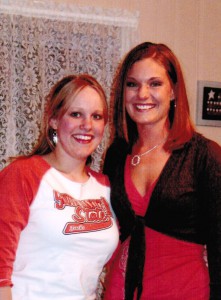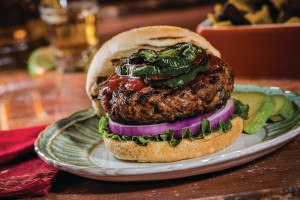
We can cook and we love beef

Then I’d go home from lecture and my roommates and I would often whip up home cooked meals in our trailer-house kitchen. I thought we must be anomalies.
In the last decade social media has really taken off, and now I often see what my friends are cooking up. I have begun to realize that many of us have skills. We make breads, we try new desserts (even when the recipe looks complicated), we use ingredients our mothers have never heard of before. And above all, I see a whole lot of beef popping up in my Facebook and Instagram newsfeeds.
So, when Bailey Harsh and Deb VanOverbeke of Oklahoma State University authored a new research paper on beef retail and foodservice trends, I may have been just a wee bit giddy when I read this: “Today, beef consumption is higher among consumers 18 to 34 as compared to those over 35. This group of 80 million consumers born between 1980 and 2000 is most commonly known as the ‘Millennial’ generation.”
(Woohoo! Yes! Yippee!)
That was me celebrating the good news story: the fact that the future of beef demand looks good.
Yet, we can’t deny that there’s been a decline in high-school cooking education and more after-school activities take families out of the kitchen.
“
It just places more burden on beef to perform.
“We can’t assume that folks know how to buy the cut, how to season it, how to prep it and how to know when it’s done or what temperature to cook it at,” he says, “but the desire for knowledge is there and people want great food. That’s what beef has to deliver on.”
Working with you, we’re glad to be doing our part to keep my generation coming back for more!
May your bottom line be filled with Black Ink,
Miranda
You may also like
$100,000 Up for Grabs with 2024 Colvin Scholarships
Certified Angus Beef is offering $100,000 in scholarships for agricultural college students through the 2024 Colvin Scholarship Fund. Aspiring students passionate about agriculture and innovation, who live in the U.S. or Canada, are encouraged to apply before the April 30 deadline. With the Colvin Scholarship Fund honoring Louis M. “Mick” Colvin’s legacy, Certified Angus Beef continues its commitment to cultivating future leaders in the beef industry.
Raised with Respect™ Cattle Care Campaign Launched This Fall
Raised with Respect™ was developed as part of a strategic cattle care partnership between Sysco and CAB. The collaboration focuses on supporting farmers and ranchers, equipping them with continuing education to stay current on best management practices and helping to increase consumer confidence in beef production.
Quality Wins, Again
Sara Scott, Vice President of Foodservice for Certified Angus Beef, emphasizes the importance of taste over price in the beef market during the Feeding Quality Forum. As consumer demand for high-quality beef grows, Scott highlights the need for increased supply and encourages communication with packer partners to meet the demand for Prime beef.



